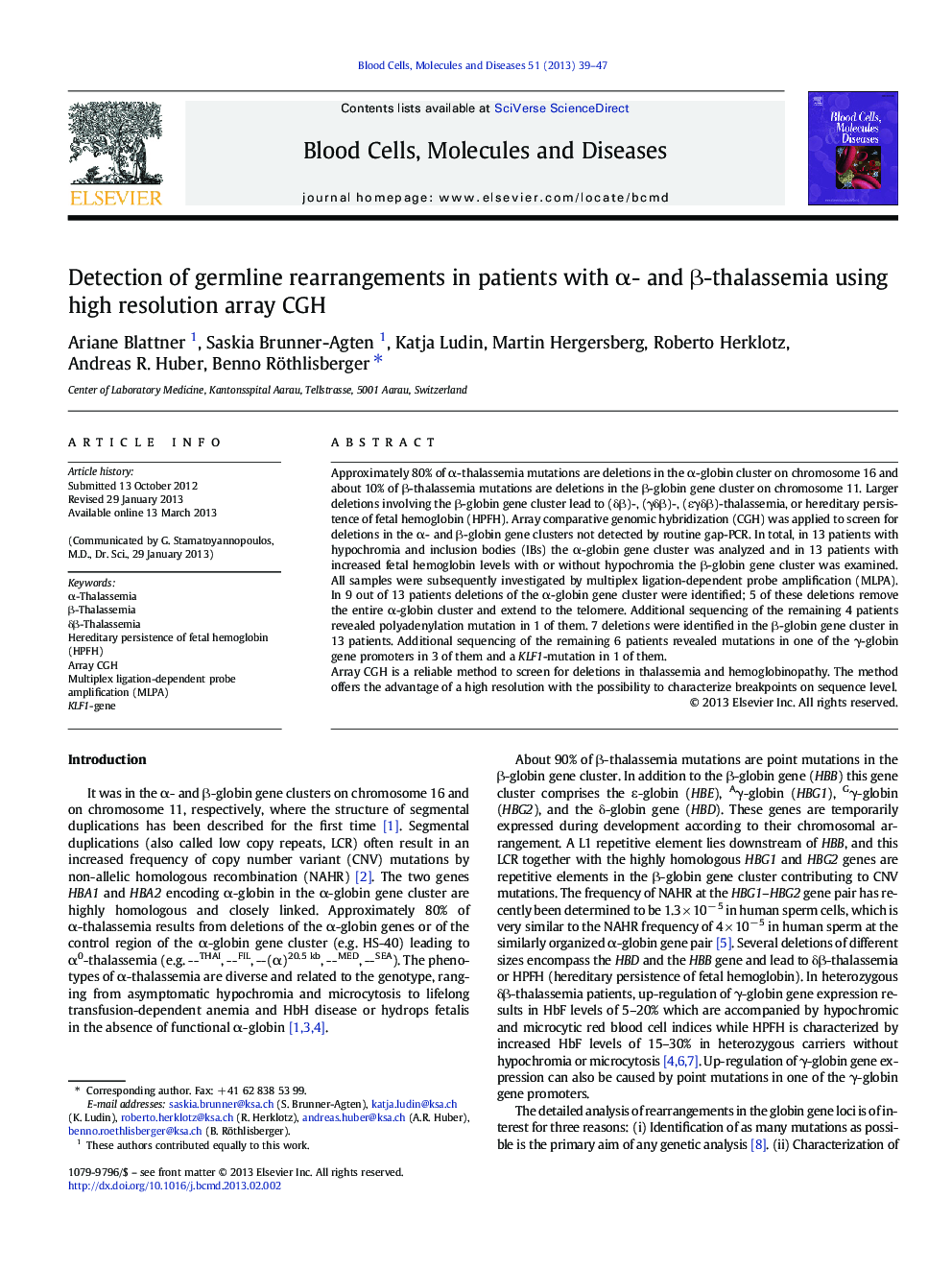| Article ID | Journal | Published Year | Pages | File Type |
|---|---|---|---|---|
| 5913556 | Blood Cells, Molecules, and Diseases | 2013 | 9 Pages |
Approximately 80% of α-thalassemia mutations are deletions in the α-globin cluster on chromosome 16 and about 10% of β-thalassemia mutations are deletions in the β-globin gene cluster on chromosome 11. Larger deletions involving the β-globin gene cluster lead to (δβ)-, (γδβ)-, (εγδβ)-thalassemia, or hereditary persistence of fetal hemoglobin (HPFH). Array comparative genomic hybridization (CGH) was applied to screen for deletions in the α- and β-globin gene clusters not detected by routine gap-PCR. In total, in 13 patients with hypochromia and inclusion bodies (IBs) the α-globin gene cluster was analyzed and in 13 patients with increased fetal hemoglobin levels with or without hypochromia the β-globin gene cluster was examined. All samples were subsequently investigated by multiplex ligation-dependent probe amplification (MLPA). In 9 out of 13 patients deletions of the α-globin gene cluster were identified; 5 of these deletions remove the entire α-globin cluster and extend to the telomere. Additional sequencing of the remaining 4 patients revealed polyadenylation mutation in 1 of them. 7 deletions were identified in the β-globin gene cluster in 13 patients. Additional sequencing of the remaining 6 patients revealed mutations in one of the γ-globin gene promoters in 3 of them and a KLF1-mutation in 1 of them.Array CGH is a reliable method to screen for deletions in thalassemia and hemoglobinopathy. The method offers the advantage of a high resolution with the possibility to characterize breakpoints on sequence level.
